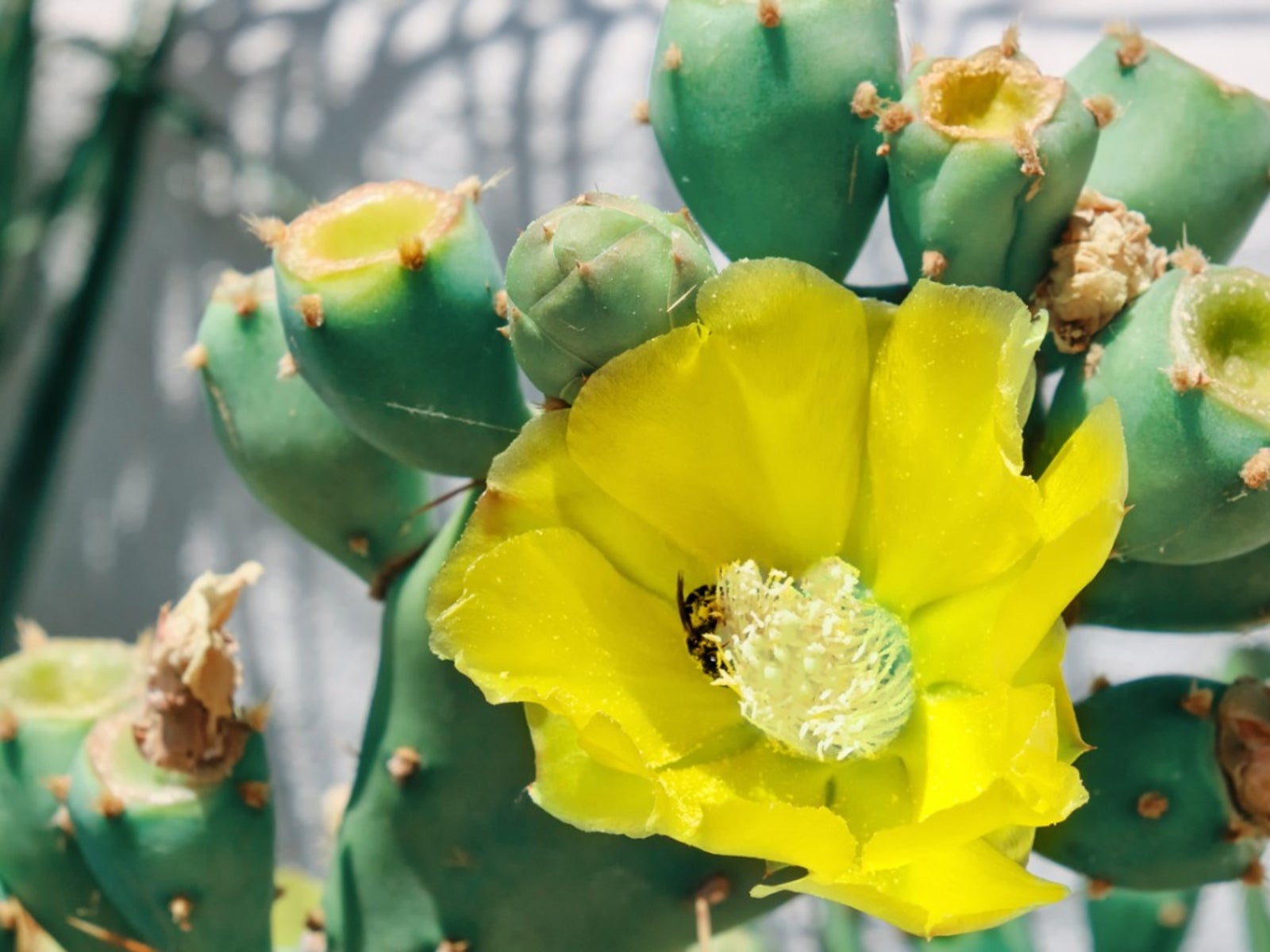Spineless Prickly Pear Info – Tips For Growing Ellisiana Prickly Pears


If you are among the many gardeners who like cactus but don’t like spines, it may be time to consider installing Ellisiana cactus in your backyard. Its scientific name is Opuntia cacanapa ‘Ellisiana’ but it is better known as spineless prickly pear. What is a spineless prickly pear? Read on for spineless prickly pear information including tips on growing Ellisiana prickly pear.
What is a Spineless Prickly Pear?
The spineless prickly pear is a type of evergreen cactus that, unlike other types of prickly pear cacti, isn’t armed and dangerous. If you are looking for a succulent that looks like a cactus but doesn’t have long, pointed spines, an Ellisiana cactus might be the plant for you. According to spineless prickly pear information, the plant offers many attractive features in addition to not having spines. During the summer, it grows large bright yellow blossoms that attract hummingbirds. It also produces bright red fruits called tunas.
Growing Ellisiana Prickly Pears
If you are interested in growing Ellisiana prickly pears, you’ll want to check your hardiness zones. According to prickly pear information, this cactus is quite cold hardy for a succulent. The Ellisiana cactus is also tolerant of heat. You can start growing Ellisiana prickly pears in U.S. Department of Agriculture plant hardiness zones 6 through 10.
Spineless Prickly Pear Care
Ellisiana cactus is a very easy-care plant for your backyard. The most important part of spineless prickly pear care is planting the cactus in appropriate soil. Pick a soil that is both well-drained and rich. Gritty or sandy soil is just fine. Irrigation is a part of spineless prickly pear care, but you don’t have to invest much water here. The cactus prefers evenly moist soil in summer, but it is drought tolerant. It requires little, if any, irrigation in winter. One of the primary attributes of the Ellisiana cactus is its lack of sharp spines, but it isn’t entirely risk free. You can get tiny slivers from the pads, so when you touch them, do so between the glochid dots or wear gloves just to be safe. Those growing Ellisiana prickly pears should note that three parts of the cactus are edible. You can eat the cactus pad as a vegetable, add blossom petals to salads, and eat the fruit like any other fruit.
Sign up for the Gardening Know How newsletter today and receive a free copy of our e-book "How to Grow Delicious Tomatoes".

Teo Spengler is a master gardener and a docent at the San Francisco Botanical Garden, where she hosts public tours. She has studied horticulture and written about nature, trees, plants, and gardening for more than two decades, following a career as an attorney and legal writer. Her extended family includes some 30 houseplants and hundreds of outdoor plants, including 250 trees, which are her main passion. Spengler currently splits her life between San Francisco and the French Basque Country, though she was raised in Alaska, giving her experience of gardening in a range of climates.